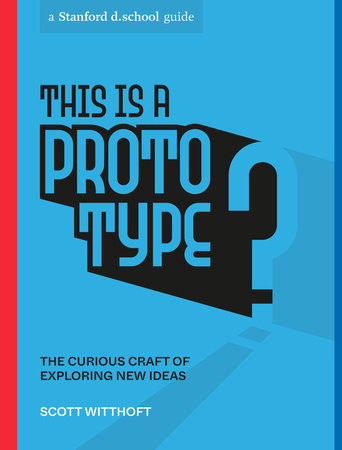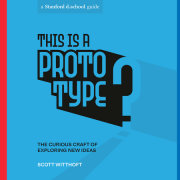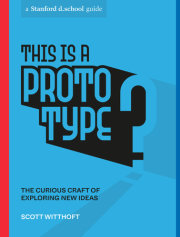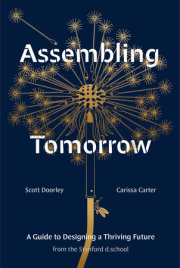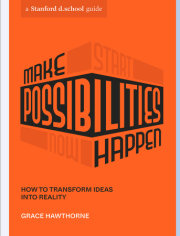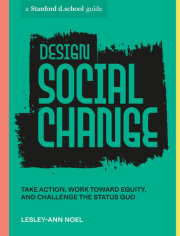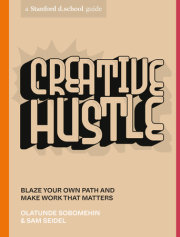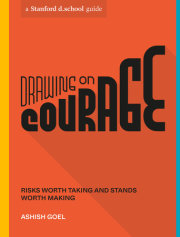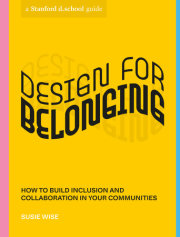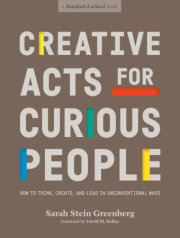IntroductionHow do you close the gap between
I wonder and
I know? You make a prototype. A prototype is a tool that gives you a chance to investigate your ideas and explore what could, should, or would come next, whether you are designing a new product, working out a new routine, or rearranging
your furniture. It’s a modest tool for the lofty goal of testing the future, or for at least testing a question you have about your future.
Prototyping helps lower the stakes for exploring new questions by reducing risk—using fewer resources like time, money, and emotional commitment— especially when anxiety about outcomes might keep you from starting. Prototyping is a primary tactic for designers, but it’s a tool that also shows up in faraway fields. Skateboarders and chefs, for example, know that being intentional doesn’t require being perfect at first. A skateboarder tries a new trick: that’s a prototype experience. A chef experiments with a new recipe: that’s a prototype experience. We know from watching both the skater and the chef that the next try comes after understanding what happened the first time. This is a strategy of repetition, not a singular performance. This is also a strategy of learning, with discovery embedded in every outcome. Through knowingly imperfect attempts, prototype experiences illuminate possibilities for your next move.
Unlike finished products ready for purchase, prototypes are imperfect and impermanent
by design. Their value comes from efficiency, helping you learn the most from the fewest resources. This makes them a unique type of tool, such that the best prototype doesn’t have to be of “best-built” quality right now.
The low-resolution nature of prototypes invites a behavior of breaking the things you make. Making and breaking is how you learn through experience. This means that prototyping is provocative by nature, with an undeniable element of fruitful sabotage. It’s often misrepresented as an act of trivial trial and error or of recklessly moving fast for the sake of a crash. Sure, swiftness is a virtue, but a prototype’s job is to teach from the broken bits, before fallout is let loose in the world. In some ways, that means prototyping is a slow art of figuring out by fumbling around; it takes practice to create prototypes that fail well.
This book presents tools, mindsets, and methods of prototyping that will serve your success no matter what project or product you undertake. Asking questions, speculating about answers, listening to responses, and understanding implications are all parts of an approach that we’ll explore.
Prototyping is a reliable response in the face of the unknown in your career, your health, and your relationships.
What should I do? What is the right thing to do now? These are common starting points. It’s also common practice to seek answers in the same way you always do. What happens when you deliberately try to do something in a new way, one for which there is no known precedent? This is the perfect point at which to prototype—to skip past the fear of not knowing an answer and start with a question, without rushing to be “right,” right now.
Copyright © 2022 by Scott Witthoft and Stanford d.school. All rights reserved. No part of this excerpt may be reproduced or reprinted without permission in writing from the publisher.

